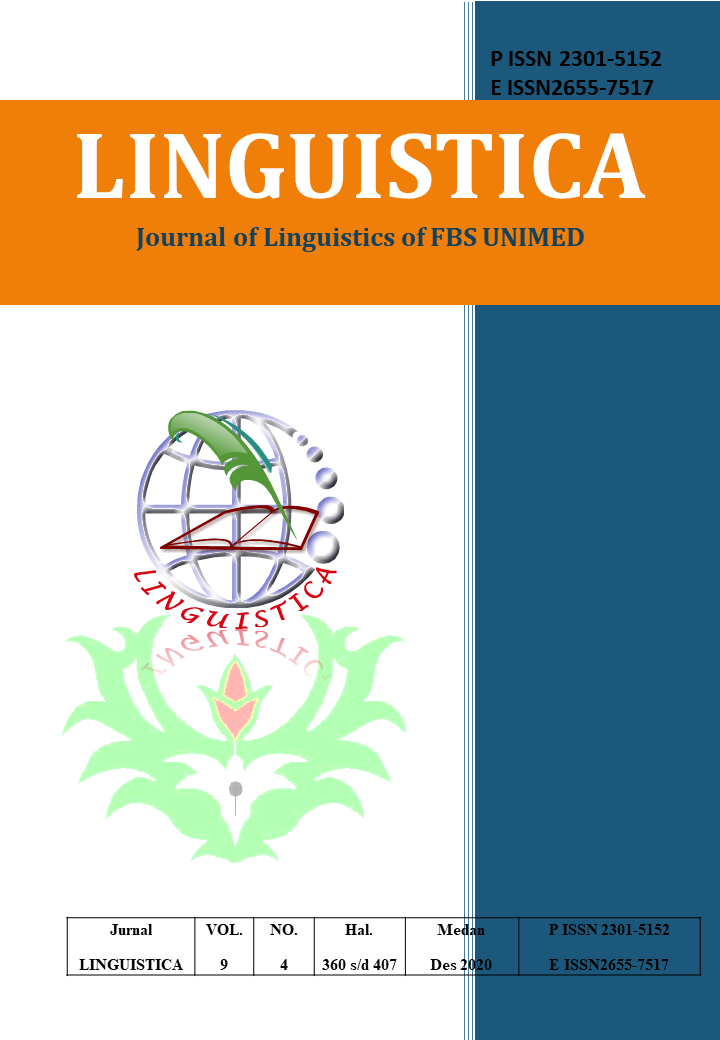CONVERSATIONAL IMPLICATURE IN DIALOGUE OF œLAYAR TERKEMBANG NOVEL BY SUTAN TAKDIR ALISJAHBANA
DOI:
https://doi.org/10.24114/jalu.v9i4.21718Abstract
This research dealt with Conversational Implicature in Dialogue of LayarTerkembang Novel By SutanTakdirAlisjahbana based on Grice™s Theory and it was aimed to finding out the types of conversational implicature, and to describe why the certain type of conversational implicature becomes dominant. This research was conducted by using descriptive qualitative method. The source of the data was taken from LayarTerkembang novelby SutanTakdirAlisjahbana, Then the dialogue of the novel as the data for the research. The findings showed that there were two types of conversational implicature in the procedures namely Generalized Conversational Implicature belong to 33 utterances and Particularized Conversational Implicature belong to 36 utterances. So, the most dominant types of conversational implicaturebetween the main characters in the novel was particularized conversational implicature because it more contained ambiguity, implicit meaning, conveyed an additional meaning, and their response did not relevant with every question and also it cannot easily to understand what he/she was talking about.Downloads
Published
2021-01-07
Issue
Section
Articles
License
Copyright (c) 2021 TIKA MULIYANI, MEISURI MEISURI, WIDYA ANDAYANI

This work is licensed under a Creative Commons Attribution-ShareAlike 4.0 International License.
Authors who publish with this journal agree to the following terms:
- Authors retain copyright and grant the journal the right of first publication with the work simultaneously licensed under a Creative Commons Attribution License that allows others to share the work with an acknowledgment of the work's authorship and initial publication in this journal.
- Authors are able to enter into separate, additional contractual arrangements for the non-exclusive distribution of the journal's published version of the work (e.g., post it to an institutional repository or publish it in a book), with an acknowledgment of its initial publication in this journal.
- Authors are permitted and encouraged to post their work online (e.g., in institutional repositories or on their website) prior to and during the submission process, as it can lead to productive exchanges, as well as earlier and greater citation of published work (See The Effect of Open Access).
- This work is licensed under a Creative Commons Attribution-ShareAlike 4.0 International License.

